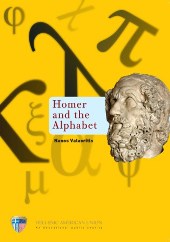Homer and the Alphabet

The English edition of Nanos Valaoritis’ detailed study, presenting his innovative approach in interpreting Homer’s epics.


The English edition of Nanos Valaoritis’ detailed study, presenting his innovative approach in interpreting Homer’s epics.
In the English edition of his essay, Homer and the Alphabet, Nanos Valaoritis focuses on this organizational device and introduces a new perspective on how the two surviving epics, the Iliad and the Odyssey, might have been composed.
Valaoritis reasons that the use of the Greek alphabet to enumerate the rhapsodies and select the thematic words for each is a key element in the rhetoric and symbolic interpretation of the works. In his opinion, if this is not taken into consideration, it is impossible to explain the length of the two works or understand their inner meaning. He elaborates on this viewpoint suggesting that the poet, using the method of thematic acrophony (in which each letter of the alphabet represents the initial sound of the thing to which it refers), chooses words that begin with the alphanumeric letter in the title of each rhapsody to compose its themes.
Valaoritis substantiates his theory with references to ancient sources in a work that overturns what we thought we knew about the poetic structure of the Homeric texts.